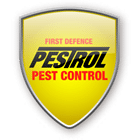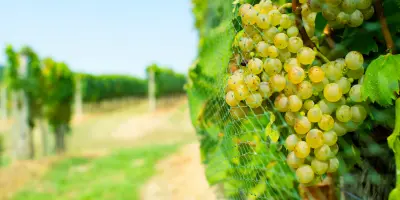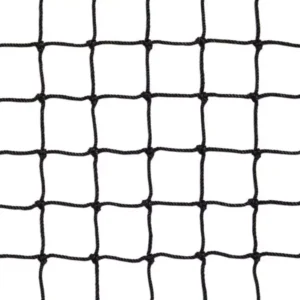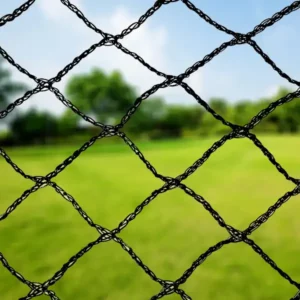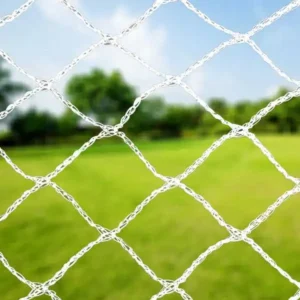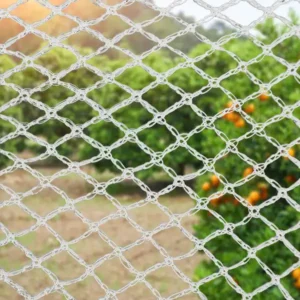Identifying Your Target Birds: Guide To Choosing Bird Netting
When it comes to choosing bird netting and protecting your Australian property from birds, the first and perhaps most crucial step is identifying the specific bird species causing trouble. It’s a bit like a detective game, where each bird species is a different suspect with its own unique characteristics. Remember, in Australia, we’re dealing with a diverse bird population, from the tiny, nimble sparrows to the larger, more robust pigeons.
Let’s start with the smaller birds – think sparrows, finches, and other petite feathered visitors. These little guys are experts at sneaking through small spaces, which means your netting needs to be equally adept at keeping them out. This is where finer mesh sizes come into play. A fine mesh is like a delicate barrier; it’s unobtrusive yet effective, preventing these small birds from slipping through and making themselves at home where they’re not wanted.
But what about the bigger birds? Ah, the pigeons, crows, and seagulls – the more substantial members of the bird world. These fellows require a bit of a stronger approach. Heavier-duty materials are your go-to here. It’s like choosing a sturdy fence over a decorative one; you need something that can withstand the size and strength of these larger birds. And don’t forget about larger mesh sizes. While you want to keep these big birds out, you also don’t want to create a visual eyesore or a barrier that blocks your view of the beautiful Australian skies.
Size Mesh
In the realm of bird netting, the size of the mesh is much like selecting the right tool for a job. It’s a critical factor that determines how effective your netting will be against different bird species. In Australia, where bird varieties range from tiny sparrows to large cockatoos, getting the mesh size right is key to a successful bird-proofing strategy.
For the smaller avian visitors, such as sparrows, finches, or wrens, which are common in many Australian backyards, finer mesh sizes are your best bet. Think of it like a fine sieve – small enough to prevent these little birds from slipping through. This precision ensures that while your garden is protected, the natural beauty and balance are maintained without harming these tiny creatures.
On the flip side, when dealing with larger birds like pigeons, crows, or even seagulls, a larger mesh is the way to go. These bigger birds require a sturdier approach. A larger mesh, while robust enough to keep these substantial birds at bay, also ensures that the netting isn’t excessively heavy or visually obtrusive. It’s about striking that balance where the mesh is effective yet not overly restrictive, allowing for air flow and visibility while still serving its protective purpose.
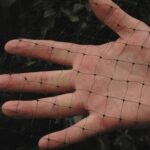
Anti Bird Netting – Light Weight Extruded
Mesh Size: 15mm x 15mm
Often used to prevent birds such as, pigeons, Indian mynas, sparrows, starlings.
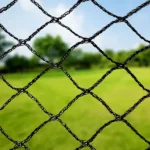
Diamond Bird Netting
Mesh Size: 17mm x 17mm
Great for commercial orchards, vineyards, and gardens
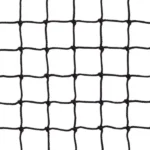
Heavy Duty Bird Netting
Mesh Size: 19mm x 19mm
Least obtrusive Bird Netting, Wont pull or stetch
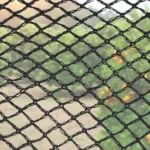
Wildlife Safe Bird Netting
Mesh Size: 5mm x 5mm
All Bird Species.
Complies with Victoria Regulations.
Considering Netting Material: Choosing the Right Bird Netting
In the quest to find the perfect bird netting, one of the most crucial decisions lies in choosing the right material. The material not only dictates the netting’s durability and effectiveness but also its suitability for different environments and bird species. Let’s explore the most common materials used in bird netting – polyethylene, nylon, polypropylene, and stainless steel – and discuss their respective advantages.
Polyethylene Netting: Known for its lightweight yet durable nature, polyethylene netting is a popular choice for general bird control. Its biggest advantage is its resistance to UV radiation, a critical factor considering Australia’s harsh sun. This resistance ensures that the netting remains effective for a longer period, without succumbing to the degrading effects of continuous sun exposure. Additionally, polyethylene is flexible, making it easy to install in various settings, from small garden patches to larger agricultural lands.
Nylon Netting: Nylon stands out for its exceptional strength and flexibility. This material is ideal for areas that endure regular stress or are exposed to strong winds and storms – a common scenario in many parts of Australia. Nylon netting is resilient against these elements, ensuring that your bird control solution remains intact and functional even in adverse weather conditions.
Polypropylene Netting: This material is often chosen for its balance of lightweight design and durability. Polypropylene is particularly effective for temporary setups or for use in areas where lighter netting is sufficient. It’s also a cost-effective option for those who need a reliable solution without a significant investment.
Stainless Steel Netting: When it comes to the most challenging environments and the largest, most persistent birds, stainless steel netting is the ultimate solution. Commonly used in critical areas such as airports or large commercial spaces, stainless steel netting is unparalleled in strength. It withstands not just the attempts of birds to breach it, but also resists corrosion and wear over time, making it a long-term solution.
Assessing Durability in Bird Netting: The Longevity Factor
Choosing durable bird netting is crucial, particularly in Australia’s harsh climate. Durability hinges on UV resistance and overall longevity. In Australia’s intense sun, netting without UV resistance can quickly degrade, losing effectiveness and necessitating frequent replacements. UV-resistant netting combats this with special treatments to withstand ultraviolet rays, ensuring sustained strength and integrity, especially in sun-exposed areas like gardens and orchards.
Beyond UV resistance, longevity is essential. Quality netting withstands varied environmental challenges like wind, rain, and temperature changes, maintaining its structure and function. This reduces the need for frequent repairs or replacements, offering reliable, long-term protection for your property. The right netting balances durability against environmental factors, providing a steadfast solution in demanding conditions.
Visibility and Aesthetics: Choosing the Right Color for Bird Netting
When it comes to bird netting, one aspect that often gets overlooked is its visibility and how it blends with its surroundings. The color of the netting, particularly in settings where aesthetics are important, can make a significant difference. The most common choices are black and white netting, each offering distinct advantages in terms of visibility and deterrence.
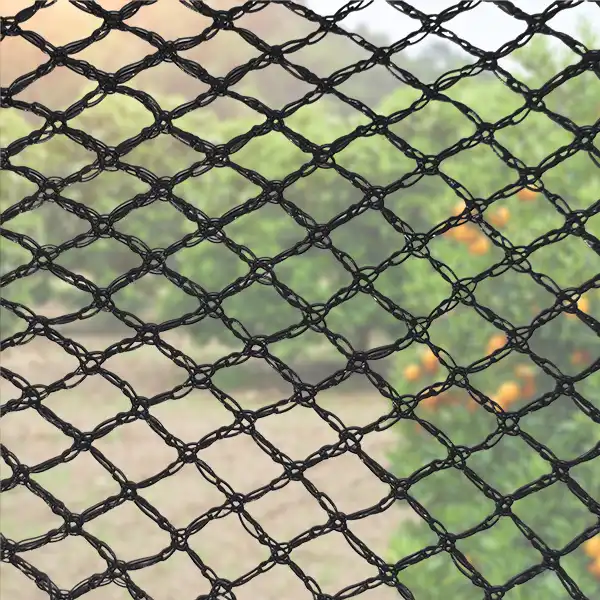
Black netting is known for its discreet nature. Its ability to blend into the background makes it a popular choice for residential areas, gardens, and historical sites where maintaining visual appeal is crucial. The subtlety of black netting lies in its low profile, which doesn’t detract from the beauty of the architecture or landscape. It provides effective bird control without becoming an eyesore.
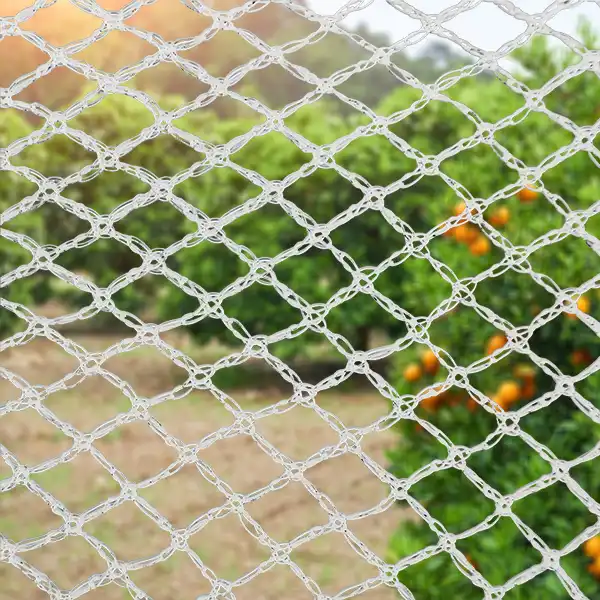
On the other hand, white netting stands out more, making it more visible against most backdrops. This visibility isn’t necessarily a disadvantage; in fact, it can serve as an additional deterrent to birds. The prominence of white netting can make it a more effective choice in agricultural or commercial settings where the primary goal is to keep birds away, and the aesthetic aspect is less of a concern.
Ultimately, the choice between black and white netting comes down to a balance between functionality and aesthetics. Black netting offers a more subtle, unobtrusive approach, ideal for maintaining the look and feel of a place, while white netting, more noticeable, can act as a stronger visual barrier to birds. Both options provide effective protection, but the decision should be guided by the specific needs and desired outcomes of the area being protected.
Navigating Local Compliance for Bird Netting
Installing bird netting involves more than just choosing the right material or mesh size. You also need to know and follow local regulations, especially in places like Victoria, Australia. These rules help balance bird control needs with protecting the environment and wildlife.
In Victoria, the law is clear: netting for household fruit trees, vegetable gardens, and other fruit-bearing plants must have a mesh size of 5mm x 5mm or less. This rule stops wildlife from getting trapped and lets homeowners protect their crops from birds. If your current netting doesn’t meet this standard, you’ll need to replace it.
Also, when you’re throwing away old netting, put it in a strong biodegradable bag. This step helps keep wildlife safe. Remember, these rules apply to selling and using netting at home, not in commercial settings. So, it’s important to keep these points in mind for effective and legal bird control.
Understanding Specific Netting Types: Knotted, No-Knot, Extruded, and Knotless
When choosing bird netting, understanding the differences between specific types like knotted, no-knot, extruded, and knotless is key to selecting the right option for your needs.
Knotted vs. No-Knot Netting: These are two primary categories in bird netting. Knotted netting, as the name suggests, involves knots at the intersections of the net, providing extra strength and durability. This type is often used in settings where the netting faces significant stress or environmental challenges. On the other hand, no-knot netting is smoother and often easier to handle and install. This type is less visible and can be more aesthetically pleasing, making it a popular choice for residential areas or places where appearance is a concern.
Extruded Netting
Made from polypropylene with a UV stabilizer, extruded netting is a great entry-level option, particularly suited for light gardening purposes. The UV stabilizer ensures that the netting stands up to sun exposure, prolonging its life and effectiveness. This type of netting is generally more affordable and is ideal for temporary or seasonal use.
Knotless Netting
Constructed from knitted polyethylene, knotless netting offers a step up in terms of strength compared to extruded netting. It’s more durable and typically lasts longer, making it a good investment for more permanent solutions. The smooth texture of knotless netting also makes it less likely to snag or tear, adding to its longevity.
Knotted Netting
Typically made from high-density polyethylene or nylon, knotted netting is known for its high strength and durability. This type is particularly effective in challenging environments and is often chosen for areas that require a robust bird control solution. The knotted design ensures that the net holds its shape and integrity even under stress, making it a reliable choice for long-term use.
Applications of Bird Netting: Benefits and Challenges
Bird netting offers a versatile and effective solution for protecting larger areas from avian pests. Its suitability for expansive spaces makes it a popular choice for a range of applications, from agricultural fields to urban gardens, and even in industrial settings. The durability of high-quality bird netting ensures long-lasting protection, making it a wise investment for ongoing bird control.
One of the key advantages of bird netting is its environmental safety. Unlike chemical repellents, netting provides a physical barrier that deters birds without harming them or the surrounding ecosystem. This feature is particularly important in today’s environmentally conscious world, where the emphasis is on humane and eco-friendly pest control methods.
Moreover, bird netting is effective against a wide variety of bird species. Whether it’s small birds like sparrows or larger ones like pigeons, properly installed netting can keep these feathered intruders at bay. However, the effectiveness of bird netting hinges on its proper installation. Gaps or holes in the netting can render it ineffective, as birds are adept at finding and exploiting any weak points. Therefore, choosing bird netting and ensuring a comprehensive and secure installation is crucial.
While bird netting is generally cost-effective in the long run due to its durability and effectiveness, initial installation costs can be higher compared to other bird control methods. Additionally, installing netting over large areas or in complex environments can be challenging and may require professional assistance.
Pros and Cons of Using Bird Netting
Choosing Bird netting comes with its own set of advantages and disadvantages that are crucial to consider before installation.
Pros:
Suitability for Large Areas: One of the biggest advantages of bird netting is its effectiveness over large spaces. Whether it’s agricultural fields, vineyards, or large gardens, bird netting provides extensive coverage, making it an ideal solution for wide-area bird control.
Long-term Effectiveness: Once installed, high-quality bird netting offers long-lasting protection. It’s a durable solution that withstands various environmental factors, ensuring prolonged efficacy against bird intrusion.
Environmental Safety: Bird netting is a non-invasive method of bird control. It creates a physical barrier without the need for harmful chemicals, making it a safe choice for both the birds and the environment.
Cons:
Installation Challenges: Proper installation of bird netting can be complex, especially over irregularly shaped areas or large expanses. This process often requires careful planning and, in some cases, professional assistance to ensure that the netting is effective.
Potential Ineffectiveness if Improperly Installed: If bird netting is not installed correctly, with gaps or loose areas, it can be ineffective. Birds are adept at exploiting small openings or weaknesses in the netting, which can render the entire installation futile.
Initial Cost and Maintenance: While bird netting is cost-effective in the long run, the initial investment for high-quality netting and professional installation can be substantial. Additionally, periodic maintenance is required to check for damages or wear and ensure the netting remains effective.
In conclusion, bird netting can be a highly effective solution for controlling birds over large areas, offering long-term protection in an environmentally safe manner. However, the effectiveness of bird netting largely depends on proper installation and maintenance, and it requires an upfront investment that should be considered in the decision-making process. Assessing these pros and cons in relation to your specific needs will help determine whether bird netting is the right solution for your situation.

